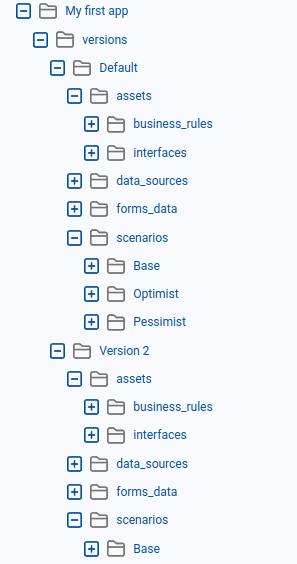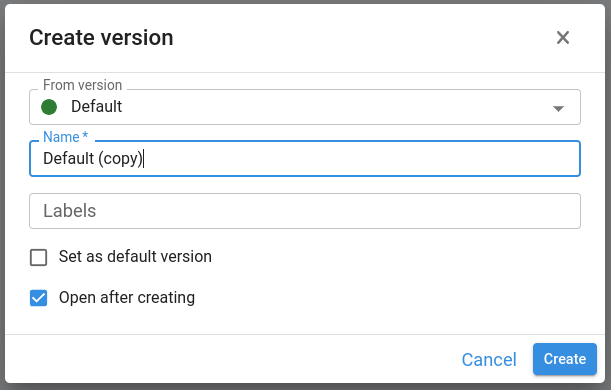When you create an application, the system creates a default version. Each time a user opens the application, it positions on a specific version that displays in the top bar.
An application contains many versions. Each version includes logic, interfaces, scenarios, data, form definitions, and other input data.
The structure of an application is as follows:

Versioning has multiple purposes and can be used as a development cycle, planning cycle, etc.
Concurrent use
Two users can work (and save changes) at the same time on different versions of the same application.
¶
Version Manager
To access the application version manager, click on the “Versions” option in the main menu.

From the manager you will be able to create, edit, export and import versions. You can also easily change the status of a version.
To create a new version you must click on the “Create version” button. Then a window like the following one will open:

New versions always take an existing version as a base, so all the content of the selected base version will be copied to the new version. You can also specify different tags (by entering text and pressing Enter). These tags will make it easier to find the version.
The “Set as default version” option allows you to specify that the new version you are about to create will be the version that will be opened when you open the application.
When you confirm the creation of the new version and if the “Open after creating” option is selected, the new version will be opened and you will be able to see it in the top bar.
¶ Version status
Each version can have one of the following statuses:
- Active: the version is in use and can be modified.
- Closed: the version is closed, therefore no changes can be made to this version.
- Archived: the version is closed and archived. In this case no changes can be made and it is hidden from the main listings.